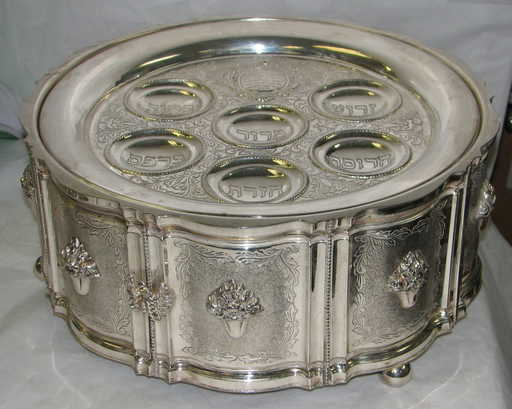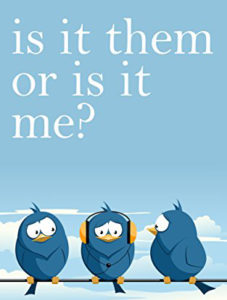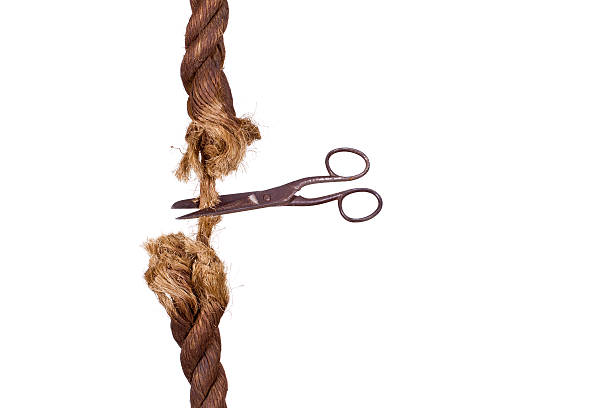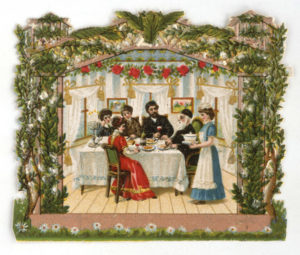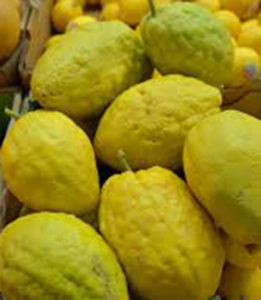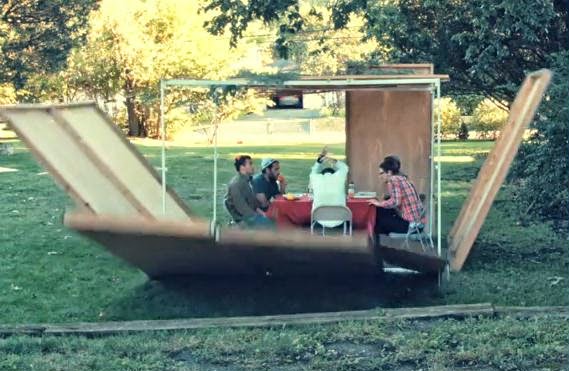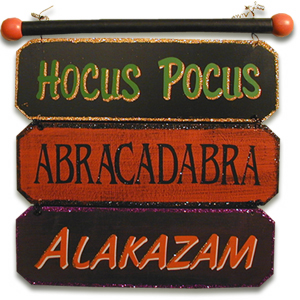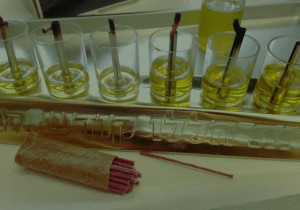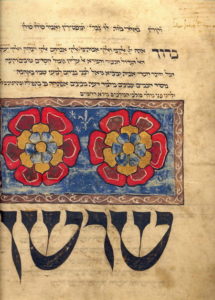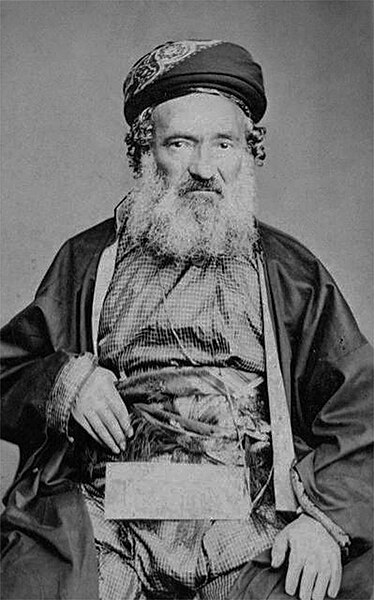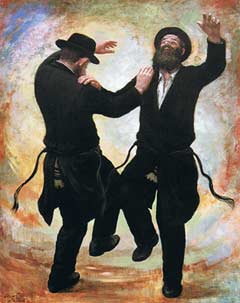Beitza 30a (2)
1- We continued the sugia of הנח להם לישראל מוטב שיהיו שוגגין ואל יהיו מזידין
In addition to the singing and dancing that the Mishna prohibits and yet no one rebukes the singers our Gemara brings another example when one remains silent and allows the violation to continue as a שוגג rather than speaking up and risking that people sin willfully.

The case concerns the Halacho min Hatorah to add at least a few minutes prior to the actual beginning of Yom Kippur. תוספות יום הכיפורים

Nevertheless, when one sees people eating on Erev Yom Kippur up until the Shekia because they are unaware of this Mitzvah, and we are quite sure that even if told they would continue eating anyway, we must remain silent. For it is better for them to eat ‘unintentionally’ than eat במזיד.
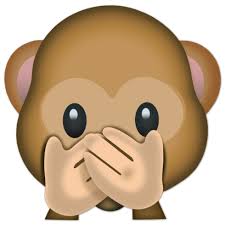
2- Discussed the מנהג of many shuls that announce before תקיעת שופר that one should not talk until after the end of Mussaf knowing that many in the crowd are not aware of this Halocha and will will talk anyway…..
3- We read the Minchas Elozor and his היתר to sing and dance.
In short – he likens the singing and dancing of Chassidim to the permitted dancing on Simchas Torah according to the opinion that allows it as the Bais Yosef quotes.
א גאנץ יאר שמחת תורה!
4- לא היו ימים טובים לישראל כחמשה עשר באב וכיום הכיפורים
We mentioned the famous Mishna end of Taanis that describes the ‘two happiest days of the Jewish calendar’ – Yom Kippur the 15th day of Av “where Jewish girls would go and dance in the vineyards” for the purpose of looking for a mate.
Now how did they dance on Yom Kippur if dancing is prohibited? Unless this was before the גזירה not to dance on Yom Tov!

5- We spoke about the little bells on the crowns of the Sefer Torah that some have an issue with since in a sense they are made to create music or sounds.

6- We came back to the תפארת ישראל again. We read the text about “a story he saw in some sefer regarding the portrait of Moshe Rabainu”.
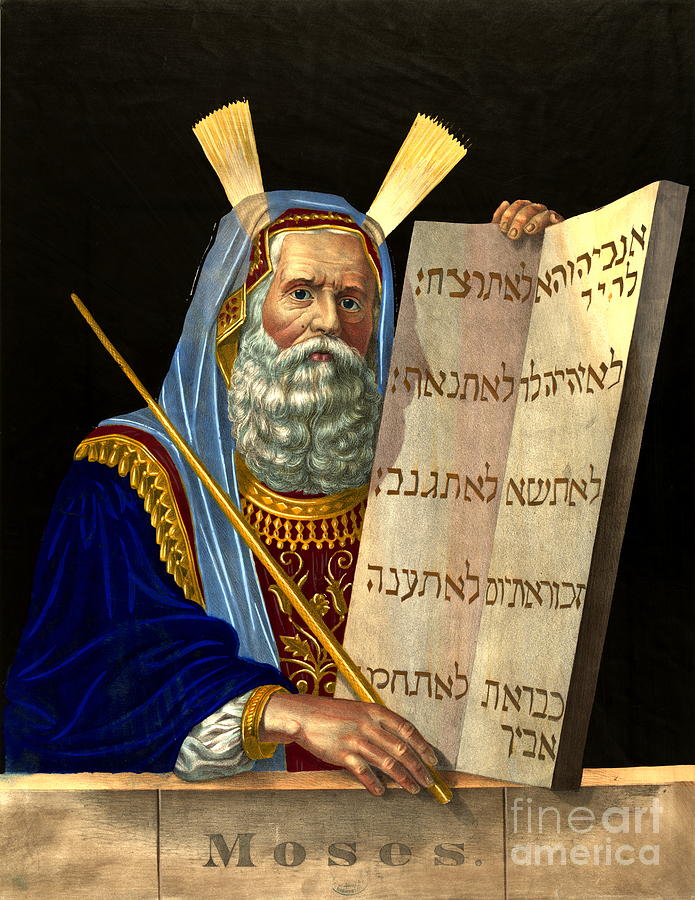
https://www.jstor.org/stable/23260707?seq=1#page_scan_tab_contents
על משה רבינו
http://hebrewbooks.org/pdfpager.aspx?req=14281&pgnum=176
This piece by the Tiferes Yisroel was yet another one of his that caused many to shun his books.
Many articles attacking the story and the TY were published.

Here is one:
תגובות
http://hebrewbooks.org/32780
See here:
FROM THE PAGES OF TRADITION Shnayer Z. Leiman R. ISRAEL LIPSCHUTZ: THE PORTRAIT OF MOSES INTRODUCTION:
(more on SZ Leiman)
Some historical figures generated controversy during their lifetime; others, perhaps more fortunate, generated controversy mostly after their death. Among the latter is R. Israel Lipschutz (1782-1860), rabbi of Danzig, whose commentary on the Mishnah, entitled Tileret Yisrael and published in a series of volumes between i 830 and i 850, remains unsurpassed as the consummate distillation of some J 000 years of rabbinic commentary on the Mishnah. After his death, an expanded version of the Tiferet Yisrael which was published in Vilna became for Mishnah what the Vilna edition of the Babylonian Talmud has become for Talmud, i.e., it is the definitive edition of text and commentary used in all traditional schools and synagogues.l The volumes were well received upon publication and gained in popularity with the passage of time. Ultimately, this led to an occasional raised eyebrow. What follows is an attempt to trace, albeit briefly, the history of what has become perhaps the most controversial passage in Lipschutz’ magnum opus. 2 The passage appears below in English translation.
The point of departure for Lipschutz’ controversial comment is a passage at M. Kiddushin 4:14 whose plain sense seems to be: “the best of physicians are destined to Gehenna.” Lipschutz was disturbed by the unhappy fate in store for the best of physicians and wondered aloud why the rabbis of the Mishnah looked with such a jaundiced eye on what in Lipschutz’ day was a reputable profession. His solution was a novel onc: he suggested that the best of physicians, precisely because they were the best, would be inclined to consult with their colleagues. Such arrogance could lead to malpractice; hence the Mishnaic admonition to the best of physicians: know that Gehenna awaits you. What the rabbis really wanted, explained Lipschutz, was that the best of physicians overcome their arrogance, consult with their colleagues, and assure themselves a share in the World to Come. Had Lipschutz remained content with the explanation as just summarized, the matter would have rested there. Almost gratuitously, however, Lipschutz continued his discussion by citing a remarkable legend without identifying its source. Briefly told, the legend relates that when Moses gained notoriety for leading the Israelites out of Egypt, an Arabian king sent an artist to the Israelite camp with orders to paint a portrait of Moses, and to return with it to Arabia. Upon receipt of the portrait, the king convened his physiognomists and charged them with the preparation of a physical analysis of Moses, so that the king would know whereIn lay the strength of Moses. The report based upon the analysis of the portrait was not a pleasant one. Moses was described as capricious, greedy, arrogant, indeed as being evil to the core. The king rebuked his physiognomists for their patently absurd analysis, at which point the physiognomists and the artist began hurling accusations at each other, each blaming the other for not having performed accurately their appointed task. The king decided to resolve the matter by a state visit to the Israelite camp in the Wilderness of Sinai. Upon sighting Moses, the king knew at once that the artist’s depiction was done with precision. The king concluded that his physiognomists were incompetent. Before returning to Arabia, however, he decided to relate to Moses all that had transpired. Moses assured the king that the physiognomists were as competent as the artist. Moses explained that by inclination he was all that the physiognomists had described, even worse. Only sustained self-discipline and sheer determination enabled him to overcome his natural inclination, and to attain the stature and glory that were now his. Like Moses, concluded Lipschutz, the best of physicians must be prepared to overcome pride and thereby attain glory.
What Lipschutz viewed as a compliment to Moses was seen by others as a gratuitous insult. Moreover, the insult was compounded by the fact no early Jewish source seemed to support Lipschutz’ account of the internalized transformation of Moses from sinner to saint. The broadsides against Lipschutz were not long in coming. The first of these was a pamphlet by R. Hayyim Isaac Aaron Rapoport’ (d. 1904), formerly maggid of Wilkomir but then a resident of Jerusalem entitled Quntres Zekhut ha-Rabbim and published in Jerusalem in 1894. In it, Rapoport adduced biblical, rabbinic, and kabbalistic passages that in his view proved that Moses was righteous from birth, i.e., that it was unnecessary for him to struggle with, and to overcome, his evil inclination. In a second pamphlet issued a year later,4 Rapoport claimed that the leading rabbinic scholars of his day were in agreement that Lipschutz’ account was taken into Jewish literature from a “chronicle,” i.e., from a non-Jewish source,5 Rapoport urged all Jews who owned Lipschutz’ commentary to blot out the offensive passage since it was “spurious and smacked of heresy. “6 Other witnesses against Lipschutz included R. Eliyahu David Rabinowitz-Teomim (d. 1905), then rabbi of the Lithuanian town of Mir, and R. Moses Joshua Leib Diskin (d. 1898), then rabbi in Jerusalem, Rabinowitz-Teomim wrote:7 “I have often rebuked those who cite this passage.
I have stated publicly that, with all due respect, the author of Tiferet Yisrael used poor judgment when he borrowed from the pagan literature of antiquity 8 such insulting remarks about the righteous Moses.” Diskin provided Rapoport with a series of astute arguments, all of which served to undermine the historicity of Lipschutz’ account. 9 Sometimes before 1901, R. Abraham Isaac Kook (d. 1935), then rabbi of Boisk in Lithuania, addressed a letter to a rabbinic colleague in which he cited approvingly Rapoport’s critique of Lipschutz 10 In 1928, R. Judah Leib Graubart (d. 1937), then Chief Rabbi of SI. Louis, denied the 92 Shnayer Z. Leiman historicity of Lipschutz’ account, adding that he- Lipschutz-copied it out from a German children’s storybook!!! More recently, in 1944, R. Menahem M. Kasher1i cited the passage from Lipschutz and added: “there is no source for this passage; it is imaginary.” Kashef is silent about rabbinic discussion prior to 1944. By far, the most strident denunciation of Lipschutz came from the pen of R. Judah Leib Maimon (d. 1962), religious Zionist, founder of Mosad Harav Kook, and one time Minister of Religions in the State of IsraeL. In 1955,J3 he suggested in no uncertain terms that the offensive passage be expunged from all future editions of Tiferet Yisrael. Maimon was not without influence, and when a year later the prestigious publishing house, EI ha-Meqoroth, published a new 13 volume edition of Tiferet Yisrael, the passage was expunged. Several Israeli editions of the Tiferet Yisrael have appeared since then with the passage expunged.
The most recent and learned of the denunciations appeared in 1971, when R. Mordekhai haKohen attempted the first systematic study of the passage. His study, indeed, is the point of departure for all who wish to advance discussion. It appears likely that Lipschutz did not borrow his account directly from a non-Jewish source. It was a well known legend in hasidic circles, and appeared in print as early as 1809 in R. Moses of Pshevorsk’s Or Pnei Moshe al ha- Torah. 15 R. Moses, a third generation hasidic master, died in 1806. He cites the story approvingly, indicating that he heard it said that the story appears in a book of ex empIa. In other words, for R. Moses of Pshevorsk, it was stil an oral teaching, which allegedly was available in print. Some four editions of the Or Pnei Moshe appeared in print before 1843, the year Lipschutz first published his commentary on Mishnah Kiddushin. Thus, Lipschutz meant what he said when he introduced his account with the words: “This accords with a delightful account that i once saw in writing. “16
Nonethcless, it would appear that Lipschutz’ critics were right after all. For no Jewish source prior to R. Moses of Pshevorsk knows the story with Moses as its hero. Even more damaging is the fact that earlier Jewish sources know the story, or variations of it, but with the hero identified as an anonymous wise man, or specifically as Aristotle.l? Typical of these earlier accounts is the version in R. Elijah ha-Kohen of Smyrna’s (d. 1729) Midrash Eliyahu which reads as follows:!8 Aristotle was learned in reading palm prints. Once, a scholar who claimed similar expertise, visited Aristotle’s city. In order to test the claim of the visiting scholar, Aristotle pressed his own palm on melted wax, gave the print to his disciples, and told them to ask the visiting scholar for a reading. The scholar examined the print and said: It is the print of a murderer and scoundrel adept in every wickedness,who is nonetheless a great scholar. The disciples, mocking the so-called scholar, reported the reading to Aristotle. Aristotle informed his disciples that the scholar was learned indeed and everything he said was true. Aristotle explained: my wisdom has enabled me to overcome, even to nullify, my ill-fated destiny. The late Professor Saul Lieberman was among the first to note that the story originated in classical Greco-Roman literature. 19 Clearly, Lieberman was suggesting that the earliest version of the account that would ultimately appear in Lipschutz’ Tiferet Yisrael was published in 45 H.C.E. in Cicero’s Tusculan Disputations. There, the hero is Socrates, not Aristotle. The setting is an attempt on Cicero’s part to persuade others that men are able to overcome their evil inclinations. The passage rcads:20 Moreover men who arc described as naturally irascible or compassionate or envious or anything of the kind, have an unhealthy constitution of soul, yet all the same are curable, as is said to have been Socrates’ case. Zopyrus,21 who claimed to discern every man’s nature from his appearance, charged Socrates in company with a number of vices which he enumerated, and when he was ridiculed by the rest who said they failed to recognize such vices in Socrates, Socrates himself came to his rescue by saying that he was naturally inclined to the vices named, but had cast them out of him by the help of reason. In the medieval period, the wisest of all men was thought to be Aristotle, hence the transfer of hero from Socrates to Aristotle.22
When the story entered Jewish literature, perhaps as early as the 13th eentury,23 the hero was either Aristotle or an anonymous sage. But by the 17th century Aristotle’s star had eclipsed, and it is not entirely surprising that in the 18th and 19th century Jewish sources the anonymous sage was identified as Moses. Especially noteworthy is the fact that several 18th and 19th century Jewish sources that seem to be unaware of our story are nevertheless aware that Moses had to struggle with, and ultimately subdue, his evil inclination. R. Hayyim Ibn Attar (d. 1743), kabbalist and exegete, writes:24 (Moses’) excellence in all the virtues was due entirely to his fear of God. Nothing in the natural makeup of his character aided him in attaining this excellence. One might think that he was naturally humble. The Torah therefore testifies that his successful efforts were due entirely to his fear of God. Similarly, R. Moses Hayyim Ephraim of Sudylkow (d. circa 1800), grandson of R. Israel Baal Shem Tov (d. circa 1760), writes in the name of his grandfather that “our teacher Moses was born with a natural inclination toward wickedness. Every viee was his. But he overcame his vices, transforming them into virtue. “25
This earthy view of Moses appears to have no parallel in classical talmudic or midrashic literature, nor do the kabbalistic sources seem to support such a view regarding Moses.26 The appearance of such a view in the writings of R. Hayyim Ibn Attar and R. Moses Hayyim Ephraim of Sudylkow, both especially popular in hasidic circles, as well as its ascription to the Besht, paved the way for the acceptance of the portrait of Moses’ legend among Hasidim. Although the legend would find a receptive ear in hasidic circles, others such as the maggid of Wilkomir, and especially R. Eliyahu David Rabinowitz- Teomim, were unimpressed. It was the latter who concluded in 1894 that Lipschutz’ passage was borrowed from the pagan literature of antiquity.
His instincts were right on target. 94 Shnayer Z. Leiman Who is greater: One who is virtuous by inclination or one who is virtuous by choice, i.e., one who must struggle with his evil inclination and forever transform potential vice into virtue?27
The question is an old one, addressed indirectly in the Talmud,28 and formulated most succinctly by MaImonides.29 It would appear that the carly hasidic masters were more enamored with the Jew who had to struggle with his inner-self in order to attain greatness. Hence it occasions little or no surprise when a hasidic master,30 or even Moses, is depicted as a model of such inner discipline. In Lithuania, in the late 19th century, at least some rabbinic authorities were persuaded that the truly great, and certainly Moses the Lawgiver, had to be virtuous by inclination. The truly great were to be characterized by an inner harmony that ruled out the psychological conflict reflected by Lipschutz’ legend. Lipschutz, though no hasid, was sufficiently distant from the perspective of the Lithuanian talmudists that he could feel quite comfortable with the legend about Moses, and even refer to it as a “delightful account. “31 Fortunately, today we are free to make our own decision about the matter. At the bookstores one can acquire either the unexpurgated editions of Tiferet Yisrael-with the portrait of Moses legend intact-or the censored editions. The choice is ours. THE PORTRAIT OF MOSES The best of physicians are destined to Gehenna: It seems to me that this statement is hardly pejorative; rather, it was intended as praise of the competent physician.
This accords with a delightful account that I once saw in writing. When Moses led the Israelites out of Egypt, the nations heard, they trembled, etc. (Exodus i5: i4). They were particularly curious about Moses, the man through whom all these marvelous deeds had transpired. So much so, that an Arabian king sent a gifted artist to the Israelite encampment with orders to paint a portrait of the Israelite leader, and to return with it to Arabia. The artist went, painted the portrait, and brought it to the king. The king then sent for his physiognomists, and ordered them to prepare an analysis of Moses’ character, virtues, and strengths based upon his facial features as reflected in the portrait. The physiognomists complied with the king’s order and reported as follows: “If we are to render judgment solely on the basis of the facial features in the portrait, we must report, 0 King, that-despite his distinguished reputation-he is entirely wicked, arrogant, greedy, capricious, indeed suffused with every known vice. Upon hearing the analysis, the king was livid. “You are sporting with me,” he cried out. “From every corner of the globe I have heard just the opposite regarding this great man. “The physiognomists and the artist were seized with fright; they responded to the king pusillanimously, each accusing the 95 TRADITION: A Journal oj Orthodox Thoultht other of incompetence. The artist claimed that the portrait was executed with precision; it was the physiognomists who had erred in their interpretation of the portrait. The physiognomists, in turn, blamed the artist, claiming that the portrait of Moses was obviously inaccurate. The king, determined to resolve the matter, set out in his chariot on a state visit-accompanied by his troops-to the Israelite camp. Upon sighting Moses, the man of God, from the distance, he took out the portrait, gazed at it and at Moses, and knew at once that the artist’s depiction had been executed with precision.
The king was astounded. He entered the tent of Moses, the man of God, bowed down before him, and related the entire story to him. He concluded his remarks as follows: “Before I gazed upon your face, 0 man of God, I suspected that the artist had been incompetent, for my physiognomists are without peer. Now that I have established that the portrait is accurate, I can only conclude that the physiognomists are at fault; they have deceived me. Their wisdom comes to naught. I have been supporting them even as they misled me with their nonsense. ” Moses, the man of God, replied: “Not so. Indeed, the artist and the physiognomists are exceedingly competent and wise. Know that if I were naturally virtuous, I would be no more deserving of praise than is a block of wood. For it too has no human faults. I am not ashamed to admit, however, that I am naturally inclined to all the vices listed by the physiognomists, and then some. With great effort and determination, I overcame my inclinations until their very opposites became second nature to me. That is how I earned the glory that I now enjoy in heaven above and on earth below.” We can now understand the mishnaic statement and how it praises the physician. Note that the Mishnah does not read: “The most competent (kasherJ of physicians are destined to Gehenna,” as it reads later regarding slaughterers. The term “best” (tov J, here, does not necessarily connote “the most competent,” but rather that physician who perceives himself to be the most competent of alL. He is destined to Gehenna for, due to his arrogance, he will rely entirely on his own knowledge and wiii not be inclined to consult with colleagues when in doubt. Surely it is appropriate for one whose word and pen decide matters of life and death to consult with colleagues. Moreover, due to his arrogance, it never enters his mind that he may have been misled by his own imagination. He doesn’t even take the trouble to consult the medical manuals before prescribing medicines whose side-effects may cause serious damage to the patient. Notice that the Tanna does not say that “the best of physicians” is wicked, or that he is definitely consigned to Gehenna, but rather that he is “destined to Gehenna,” i.e., he has an inclination 96 Shnayer Z. Leiman that may well lead him to Gehenna. Precisely because his inclination leads to Gehenna, all the greater is the physician’s reward and praise when he overcomes his inclination. NOTES 1. The first of the expanded editions was published in Berlin, 1862. Starting in 1887, the commentary was republished in a variety of formats at Vilna, culminating with the 12 volume 1927 edition–the standard rabbinic edition of the Mishnah.
Recent American and Israeli editions of Tiferet Yisrael are more or less faithful photographic reproductions of the Vilna, 1927 edition. Cf. the discussion below. 2. The passage first appeared in the editio principes of Tiferet Yisrael (to Mishnah: Seder NashimJ, Danzig, 1843, pp. 160a-160b. Correct, accordingly, M Hakohen, ¡shim u-Tequfnt, Jerusalem, 1977, p. 9, n. 17, who lists the editio princepes as “Vilna, circa 1860.” The passage can be located in any of the later editions at Lipschutz’ comment to M. Kiddushin 4: 14. 3. For a brief biography, full bibliography, and photograph of Rapoport, see N. Ben Menahem, “R. Hayyim yitzhak Aharon Rapoport u-Sefarav,” Tagim 2 (1971) 65-72. 4. Quntres Keli Tiferet, Jerusalem, 1895. 5. Ibid., title page. 6. Ibid., introduction. 7.
Letter of approbation to Rapoport’s Quntres Zekhut ha-Rabbim, Jerusalem 1894. 8. The italics are mine. 9. Cited in Rapoport, Quntres Lekhut ha-Rabbim, pp. 5a-5b. Typical of Diskin’s cleverness is the foIlowing argument. At Exodus 18:21, Moses was called upon to seek out and appoint as judges God-fearing, trustworthy men who spurned bribery, surely no easy task. According to the Zohar (to Exodus, p. 78a), the task was made easy through the science of physiognomy. Moses was to select the appropriate judges by reading their physiognomic signs and thereby determining their true character.
Now, argued Diskin, there are only two possibilities. Either one’s physiognomic signs appear at birth and never change, or they change as one’s character changes. If they appear at birth and never change, how was Moses able to select the appropriate judges? After all, he could easily have selected someone whose physiognomic signs indicated that he was God-fearing and trustworthy when, in fact, he was quite the opposite due to changes in his character! Clearly, then, the Zohar’s view must be that one’s physiognomic signs change as one’s character changes. By reading those signs, Moses could be certain that he was selecting appropriate judges at least for the time being. If so, concluded Diskin, Lipschutz’ account was imaginary. For by the time Moses’ portrait was painted in the wilderness, Moses’ character had changed and so too, therefore, his physiognomic signs. Those signs could not have been interpreted pejoratively by the Arabian physiognomists, as claimed by Lipschutz. Interestingly, Diskin’s analysis of the Zohar’s view on physiognomy accords with that of the oldest extant classical handbook on physiognomy.
The author of the pseudo Aristotellian Physiognomy writes as follows: It seems to me that soul and body react on each other; when the character of the soul changes, it also changes the form of the body, and, conversely, when the form of the body changes, it changes the character of the soul. See Elizabeth C. Evans, Physiognomies in the Ancient World, Philadelphia, 1969 (Transactions of the American Philosophical Society, new series, vol. 59, part 5, 1969, pp. 1-101), pp. 7~8. lO. See R. Simeon Hakohen of Mitau, Sha’ar Shimeon, Vilna, 1901, p. 53. i i. R. Judah Leib Graubart, “Yaqar mi-Zolel, ” Ilapardes i (1928), n. lO- i 1, pp. 25-26. 12. M. M. Kasher, Torah Shelemah, New York, 1944, vol. 9, p. 57. 13. J. L. Maimon in Sinai 36 (1955) 502-505. Cf. his mi-Dei Hodesh be-Hodsho, Jerusalem, 1955, voL. 1, pp. 286-288. 14. M. Hakohen, “Pnei Moshe,” Panim el Panim, April 9,1971, number 618-619, pp. 12-22. The study was reissued with minor revision in HaKohen’s ¡shim u-Tequfot, Jerusalem, 1977, pp. 7-25. All references to HaKohen in this essay are to the 1977 version. 97 TRADITION: A Journal of Orthodox Thought 15. Mczhircch, 1809, parashat huqqat (beginning). 16. It seems clear to me, however, that Lipschutz’ immediate source was not the Or Pnei Mushe. Substantive differences between the two accounts make it unlikely that the one was borrowed directly from the other. 17. The earliest account appears to be preserved in a 13th century commentary on Sefer Yetzirah falsely ascribed to R. Saadia Gaan. See SeIer Yetzirah, ed. Lewin-Epstein, Jerusalem, 1965, p. 73. I am indebted to Professor E. E. Urbach for bringing this passage to my attention. Another carly account appears in Shilah Mequhhetzet to B. l”‘cdarim 32b. For other accounts, see the study referred 10 below in note 31. IS. Midrash Eliyahu, Izmir, 1759, derush 9. 19. In a personal communication to lIakohen, op. cit., p. 24. See also H. Y. Pollak’s note in R. Isaac Arama, Aqedat Yitzhak, Pressburg, 1849, vol. 4, p. 85b; 1. ß. Levinsohn. Teudah be-Yisrael. second edition, Vilna, 1855, p. 123; and R. Yosef Zekhariah Stern, Maamar Tahalukhot ha-Aggadah, Warsaw, 1902 (reissued: Jerusalem, 1968), p. 20a. 20. Cicero, Tusculan Disputations, edited and translated by J. E. King, London, 1927, IV, XXXVII, 80, p. 419. 21. Zopyrus, a contemporary of Socrates, appears to have been the first professional physiognomist whose name has come down to us. Cf. R. Forester, ed., Scriptores Physiognomonici Graeci et Latini, Leipzig, 1893, vol. i, pp. vii-xii. 22. See, e.g., S. Horovitz, Die Stellung des Aristoteles bei den Juden des Mittelalters, Leipzig, 191 i; and E. N. Adler, “Aristotle and the Jews,” Revue des Etudes Juives 82 (1926) 91-102. 23. See above, n. 17. 24. Or ha-Hayyim to Deuteronomy 33: i. 25. Degel Mahaneh Fj”rayim, Koreti., 18JO,parashat ki-tissa, end. 26. See, e.g., Zohar, vol. 2, p. 12a where Moses is described as having been united with the Shekhinah from hirth. 27. Much turns on the meaning of “greater.” “Greater” in what sense? “Greater” in whose eyes? The Babylonian Talmud (see next note) discusses the relative merits of penitent sinners vis-à-vis the righteous who never sin. But the talmudie discussion apparently says nothing about potential sinners who restrain themselves vis-à-vis the righteous who have no inclination to sin. M. Aboth 5:23 posits that reward is according to the effort expended. But “reward” and “greatness” are not necessarily interchangeable terms, and the one need not be a measure of the other. 28. B. Berakhoth 34b and parallels. Cf. previous note. 29. Shemonah Peraqim, chapter 6, in Mishnah im Perush Rabbenu Moshe Ben Maimon, ed. Qafih with Arabic original, Jerusalem, 1965, voL 4, pp. 39J-393. Cf. R. Isaac Arama, Aqedat yitzhak, Pressburg, 1849, voL. 5, pp. 101-106. 30. E.g., R. Nahman of Bratslav (d. 1810). See A. Green, Tormented Master, New York, 1981, pp. 14-16 and passim. The notion that religious piety is measured according to the extent that righteous deeds are performed in the line of greatest resistance has its roots in antiquity (see above, n. 27). For this notiOn among hasidei ashkenaz, see H. Soloveitchik, “Three Themes in Sefer Hasidim,” AssociationjorJewish ,’)’tudies Review i (1976), p. 324 and the references cited there at note 32. 31. After the legend was incorporated into hasidic literature (by R. Moses of Pshevorsk) and mainstream rabbinic literature (by Lipschutz), it became the point of departure for much (mostly) rabbinic discussion. For references other than those cited here, see S. Leiman, “R. Israel Lipschutz and the Portrait of Moses Controversy,” in 1. Twersky, ed., Danzig, Between East and West: Aspects oj Modern Jewish History, Cambridge, 1985, pp. 51-63. 98
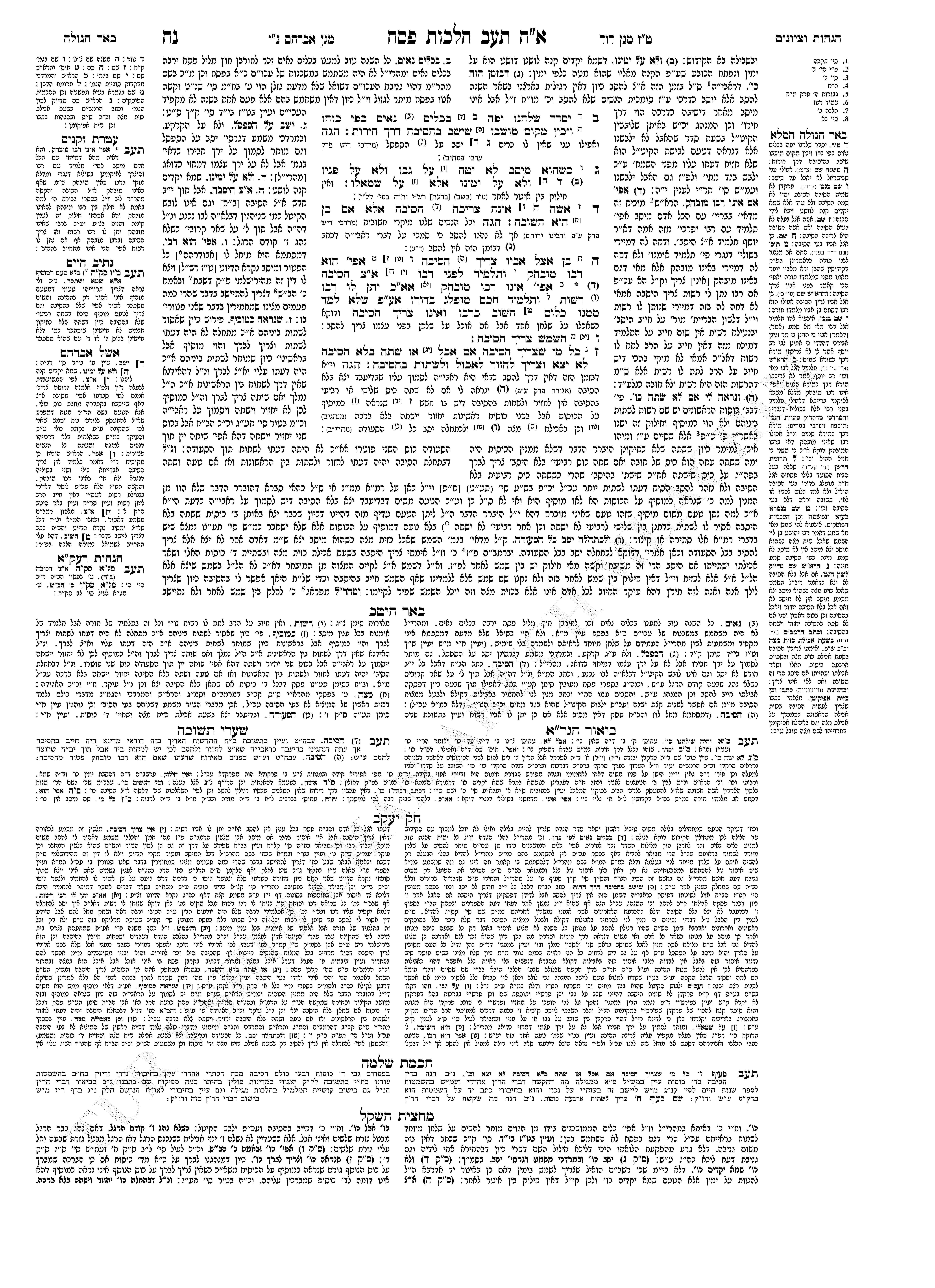 In the Minhagim of Pesach he writes something quite interesting:
In the Minhagim of Pesach he writes something quite interesting: 
